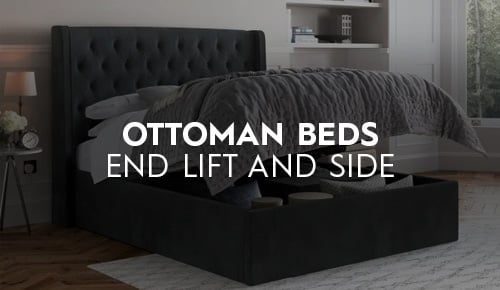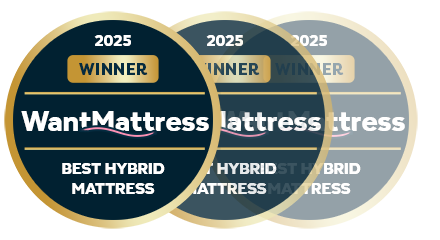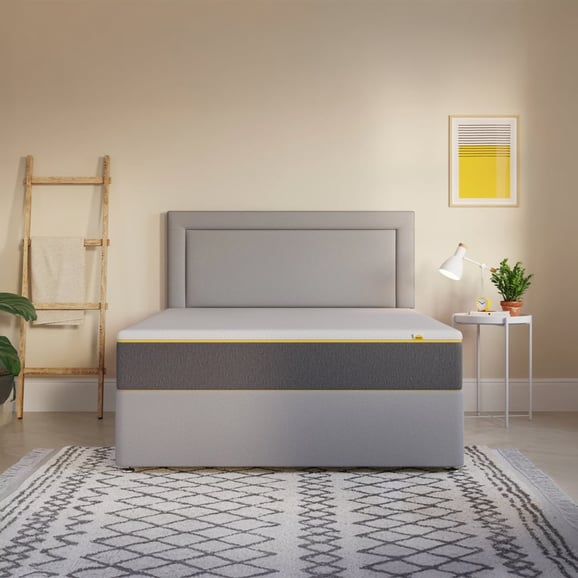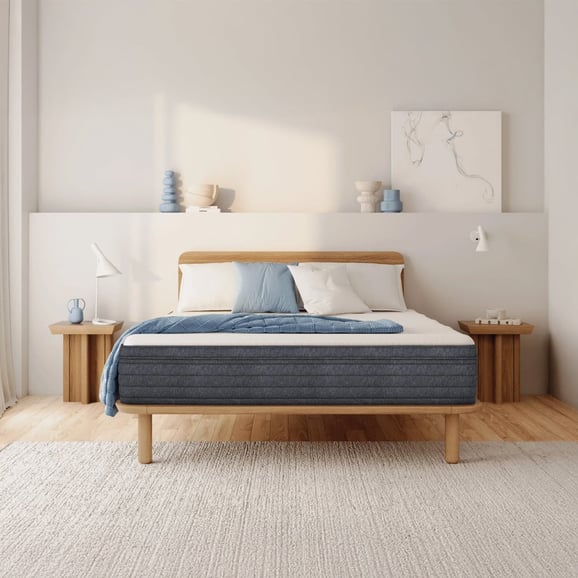If you suffer from arthritis or another joint pathology, choosing the right mattress is a great decision. We will highlight some of the most important aspects when buying your mattress if you have any of these ailments.
What Mattress is the Best for Arthritis?
The reliable memory foam, known in the health world for being the best material when buying a mattress for people with multiple chronic diseases; better yet when it is mixed with other components. Spring and latex mattresses are other options as well. In this section, we will analyze them one by one so that you can choose the best one for you.
Beyond the material, each mattress is unique in its quality and construction techniques, yet they share similarities in each category.
Memory Foam Mattresses with Springs for Arthritis and Back Pain
Hybrid mattresses, such as those made of memory foam with springs, use combinations to create the ideal mix in your mattress, combining layers of comfort made of memory foam with latex or wool. This combination offers the best of each material since it counteracts the possible problems that your mattress may have.
The best thing about them is that the support and design are stable and balanced; the cushioning is ideal for people with joint pain, relieves pressure points and has a contouring that provides comfort that only hybrid mattresses can achieve.
The springs give that extra support, balances your weight on the mattress, allowing your back to rest in a neutral position, and keeps it aligned.
Spring Mattresses for Cervical Arthritis
The spring mattress is a tradition of many homes, made of springs and nothing more. If they have a comfort layer, this is thin.
The most characteristic thing about them is their stability. The quality is high, and they provide enough support so that there is no sag in the mattress; its surface is flat, especially to keep the body at the same level, this relieves joint pain, since it stabilizes the back and extremities.
Latex Mattresses and Arthritis
Either natural, synthetic or hybrid latex; the important thing about latex is that you choose one that has a feel to your liking, for example, Dunlop latex is dense, and Talalay latex feels bouncy.
They are perfect to provide relief to your body due to their good support, both in latex mattresses mixed with memory foam or latex alone.
The material distributes the compression of your bodyweight over the entire surface of the mattress, preventing sagging but providing stability to your body support.
For this reason, they differ from foam mattresses, the latter produces a feeling of embrace that worsens the pain caused by arthritis; by avoiding this sinking, you can change positions during the night easily and without pain.
Memory Foam Mattresses
They are made of several layers of memory foam, probably mixed with polystyrene or even materials that favor breathability such as graphene.
The common thing is that mattresses of this material use the softest foam, since it will adapt better to the layers of comfort and polystyrene in its support points.
This type of mattress, made of 100% memory foam, tends to be narrower to the body than other types of mattresses, ideal for joint pain, since they will fix your body and support you, which will relieve the pressure on such joints and provide the right comfort for a better sleep.
How Does Sleeping Position Affect Joint Pain?
Similar to any chronic, inflammatory or painful disease, arthritis hurts good sleep and the quality of rest, these pains cause interrupted nights of sleep and decrease your quality of life.
The position in which you sleep is key to increasing or decreasing the pain caused by arthritis.
Depending on the area and focus of the pain you have, you may prefer one position or another to rest, or you may like to move during the night depending on how you feel.
It is advisable for people with arthritis to sleep on their back or on their side, in the fetal position. If the disease continues to damage your sleep, do not forget to consult your doctor about it.
What to Look for in a Mattress for People with Arthritis?
Adaptability
This refers to the way the mattress hugs and adapts to your body. It should always be this way, if it is your body that adapts to the mattress; it is not the right one for you.
A mattress that provides good support and adaptability, will allow the heaviest parts of your body to sink and remain supported by the mattress, which will help your spine to rest and it will relieve joint pressure.
Proper alignment of your back will reduce back pain, improving some of the discomfort that disturbs your sleep.
Quality Materials
Clearly, the better the quality, the higher the price, but it also guarantees durability and good performance, it means comfort and good sleep. A high-quality mattress will resist sagging and maintain its comfort level for many years, without losing its qualities with use.
Firmness Level
Preferences about the firmness of a mattress are usually subject to the weight of the person using it. The thinnest ones prefer a soft one to enjoy the hug of the mattress, and ventilation is not a problem since they do not tend to accumulate heat due to their low weight; but heavier people prefer a higher firmness for better support.
In the case of arthritis, a very soft mattress will hurt the spine due to misalignment, and a hard mattress will accumulate pressure on the joints as the weight falls on them, so it is important that you test your mattress before buying it to choose the right firmness for you.
Pressure Relief
When you suffer from joint pain, relieving pressure on your body is a key factor when choosing a mattress.
Since the heaviest parts of your body will apply the most force to your mattress, you must have strong pressure relief or joint pain in those areas will worsen.
Said balance and stability in the support points relates to the mattress contour, memory foam mattresses are suitable for their adaptability to the user’s anatomy; the redistribution of the body is uniform over its entire surface.
Edge Support
This refers to the hardness level of the perimeter of the mattress. A high edge firmness can make it possible for people with joint pain to use it to sit down to support getting up or lying down in bed, which is one of the most difficult parts when you suffer from arthritis.
Same thing if you like to sleep on the edge out of personal preference, good perimeter support will make you feel secure.
Ease of Movement
When you suffer from arthritis, making it easier to move around in bed is essential, as any extra effort, especially with numbness after sleeping, can worsen your pain.
If you have a mattress that fits closely to your body, which hugs you too much, it will be difficult for you to move freely. The comfort offered by dense memory foam layers makes you feel trapped in bed, but latex and foams that are more sensitive are easier to move around in.














